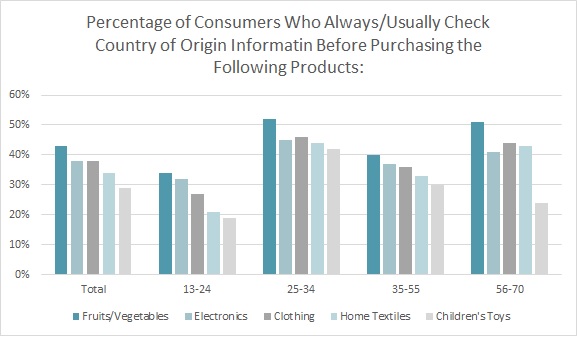There’s an amazing Twitter account called 70s Dinner Party, where users will come across such curious culinary finds as “Glazed Ham Loaf in Ring,” a slippery-looking meat ring garnished with a blob of curly parsley and a note to “serve with catsup.” No wonder Millennials embraced the craft/local/small batch/global comfort food movement. Transparency and origin are now second nature in the food business. And there are some who say it will take Millennials to bring that same transparency to the apparel industry.[quote]
“Like other generations, 7 in 10 Millennials say they’re committed to living an environmentally and sustainable lifestyle,” says Ellen Karp, founder of Anerca International, a consumer research firm that was commissioned by Oeko-Tex for a study on the global consumer. She presented the findings in a webinar for the American Apparel and Footwear Association. “So what are they doing? They’re purchasing organic foods. They’re purchasing natural organic personal care products. And that follows a very standard pattern of adoption of sustainable behaviors. People generally start with what they ingest and then move into what goes on their body.”
Additionally, Karp says, 4 in 10 try to avoid brands or companies they feel aren’t friendly either to the environment or those making the product, which could have an effect on retail or apparel brands.
“This is something that comes up again and again,” Karp says. “The general findings of the survey suggested that as people increasingly learn about the impact of textile production, the greater the likelihood for shifts in attitudes and behaviors as they seek to ‘live a better textile life.’ And brands and marketers should be ready.”
Right now, consumers — especially younger shoppers — will vet food more than their clothes. Overall, more than 43 percent of all consumers say they always/usually check the country of origin information before purchasing fruits/vegetables. That compares to 38 percent for clothes and 34 percent for home textiles, according to the Cotton Incorporated Lifestyle Monitor™ Survey.

But digging deeper, it’s clear younger consumers are putting effort into looking up some information more than other things. When it comes to checking food, 52 percent of those aged 25-to-34 “always/usually” check the country of origin, significantly more than those aged 35-to-55 (40 percent). And while fewer consumers check clothes for country of origin, 25-34 year olds were more likely to do so than those 35-55 (46 percent versus 36 percent).
Consumers also check labels for fabric content before buying. The Monitor™ research finds more than 4 in 10 (42 percent) “always or usually” check the fiber label, and cotton is their favorite fiber or fabric to wear (81 percent). Consumers say that compared to manmade fibers, cotton clothes are the most comfortable (86 percent), sustainable (86 percent), soft (83 percent), and have the highest quality (78 percent).
Karp says the Anerca study shows once people have children, their levels of concern regarding harmful substances increase. For instance, parents of young children are most concerned (51 percent), compared to parents with older kids (47 percent), and those with no kids (28 percent).
“Among the quotes from Millennials, we had one person say, ‘I never worried about harmful substances before, but after my daughter was born, I started to become interested in ingredients in personal care products. Now I want to learn as much as possible about clothing safety and responsibility,'” says Karp.
Most consumers (90 percent) say they would feel good about wearing apparel made with cotton that’s grown in the U.S., according to Monitor™ research. And 58 percent would pay more for clothes made with U.S.-grown cotton.
Searching for fiber labels for sustainability information might seem daunting. But Elizabeth L. Cline, author of “Overdressed, the Shockingly High Cost of Cheap Fashion,” and the upcoming “The Conscious Closet: A Revolutionary Guide to Looking Good While Doing Good,” offers advice to both help shoppers as well as accelerate change in the industry. She suggests consumers vet the environmental and social impact of their favorite brands through apps like Good on You and Buycott, which allow users to search their favorite labels or scan a garment’s barcode while shopping. She also suggests buying ethical and sustainable products using the shopping directory on her website, which features designers and brands that “are committed to producing fashion in a way that protects both the environment and human rights.”
Karp says Millennials want easy assurances that the brands they favor are doing the right thing. However, she says, this generation also has a heightened sensitivity to false claims, so greenwashing will only make them lose trust in the brand. Brands need to be transparent and communicate that they’re a conscious brand in a very clear way.
“If we are indeed approaching a tipping point in textile sustainability, Millennials are driving us there on the internet highway,” Karp says. “And even if you don’t market to Millennials, if your core audience is older, it’s still important to take heed. Millennials are already the loudest voice in the marketplace. They’re shopping more often than others. They are coming into positions of social, cultural and business leadership and dominance. Their values are soon to become the norm.”
